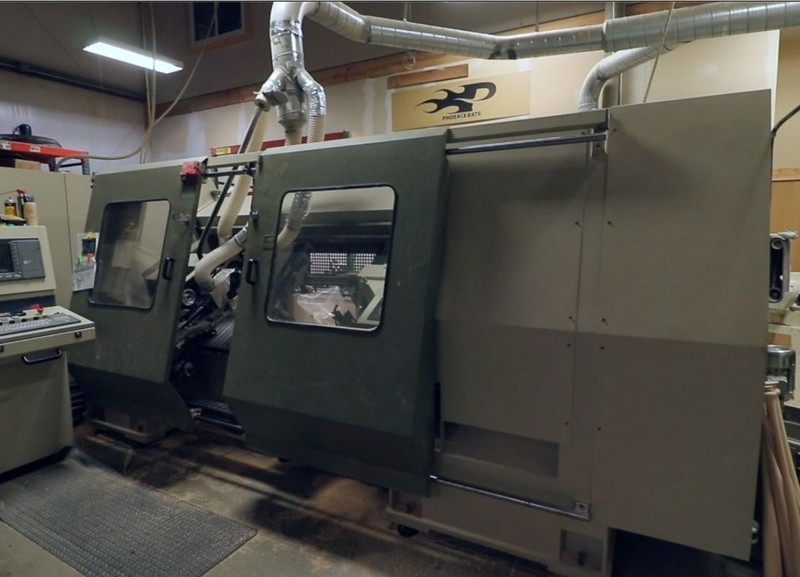The wooden baseball bat is one of the most iconic objects in the world of sports. It is, and has been, the slugging tool of choice for legendary professional batters throughout the history of baseball. The appearance of the baseball bat is as simple as sporting equipment comes: shaped wood with a thin handle that extends into a thick, rounded striking surface. However, an astounding amount of complex engineering goes into creating each bat, ranging from the type of wood and tools used all the way to the highly specific measurements required to maximize batting performance.
The Power of Wood
For a detailed explanation of the type of wood used in different bats, check out our in-depth “Selecting a Wood Bat” guide.
To summarize, the two main types of wood used in baseball bats are Sugar or Rock Maple and White Ash (also with Birch seeing a recent increase in popularity); each has its own set of pros and cons depending on a player’s batting style preferences. More important than the type of wood, however, is quality of the wood.
The Highest Quality
As Major League Baseball regulations stipulate, a professional player’s bat must be made out of a single piece of wood. Therefore, bat manufacturers must make sure that the chosen wood is a strong as possible in order to improve batting performance and to avoid any bat breakage. To do this, bat manufacturers have professional wood graders measure the quality of the wood by looking at the “slope of grain.”
The slope of grain refers to the natural lines that you see running from end to end on a wood bat. If the wood was cut appropriately to parallel the natural straight grains, the stronger and longer lasting the bat will be, and that is the goal of an excellent bat maker. In fact, it is an MLB requirement that bat handles have a natural or clear finish so that officials can inspect the quality of the grain, thus avoiding any potential broken bat injuries.
Dropping Weight
Once a good, straight-grained cut of wood is determined, the manufacturer shapes the wood into a long, cylindrical piece called a billet. The billet is then weighed to determine the potential “weight drop.” The weight drop is the difference between the weight of a bat in ounces compared to its length in inches - with the goal most often being a negative three (e.g. a 33 inch bat would weigh 30 ounces).
A larger drop (lighter compared to length) means faster swing speed, while a smaller drop (heavier compared to length) means a more powerful swing. Bat makers recognize how a billet’s weight will translate to a certain drop before the bat even begins being shaped.
Tools of the Trade
Depending on the company, different methods of bat carving are implemented. Some bat making companies still use trained professionals to carefully hand chisel and hand measure bats as the wood spins on a traditional lathe. While this method has created thousands and thousands of excellent bats, it is also extremely delicate, precise, and time-consuming.
With advancements in technology, programmable machines can create a bat with higher precision and consistency in far less time. Overall, both methods can create a professional grade slugger, so the choice between the two would simply come down to batter preference.
Finish in Style
Finally, the player determines his own bat’s finished look. Wood bat manufacturers offer multiple different hand-dipped or machine-dipped colors and stains for the bat. Generally, a water-based urethane finish is used for the staining as well as a potential wood burn for designs and sticker logos. The finish has no effect on the bat’s performance.
You may notice that many players choose to leave the bat in an unfinished natural look, while several others prefer to show off their bats with the logos – it is entirely up to each player’s discretion. Check out some of our finish options to give your next bat a customized and personal touch!

